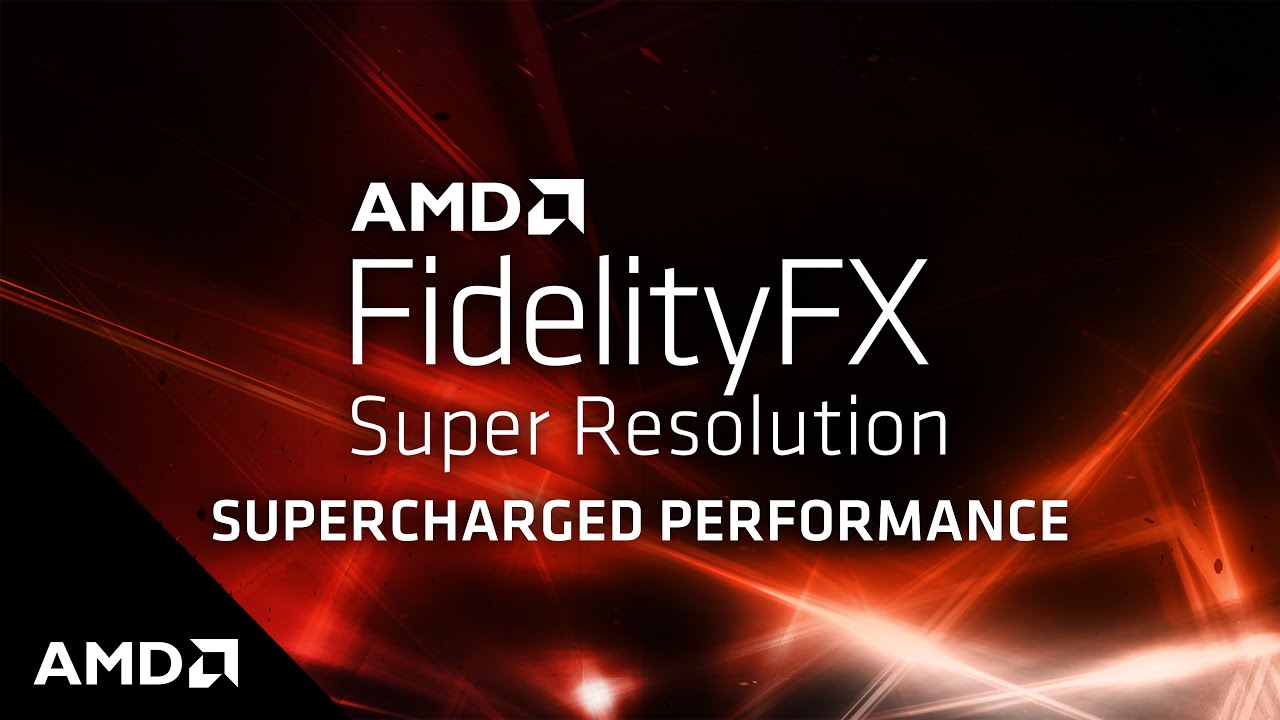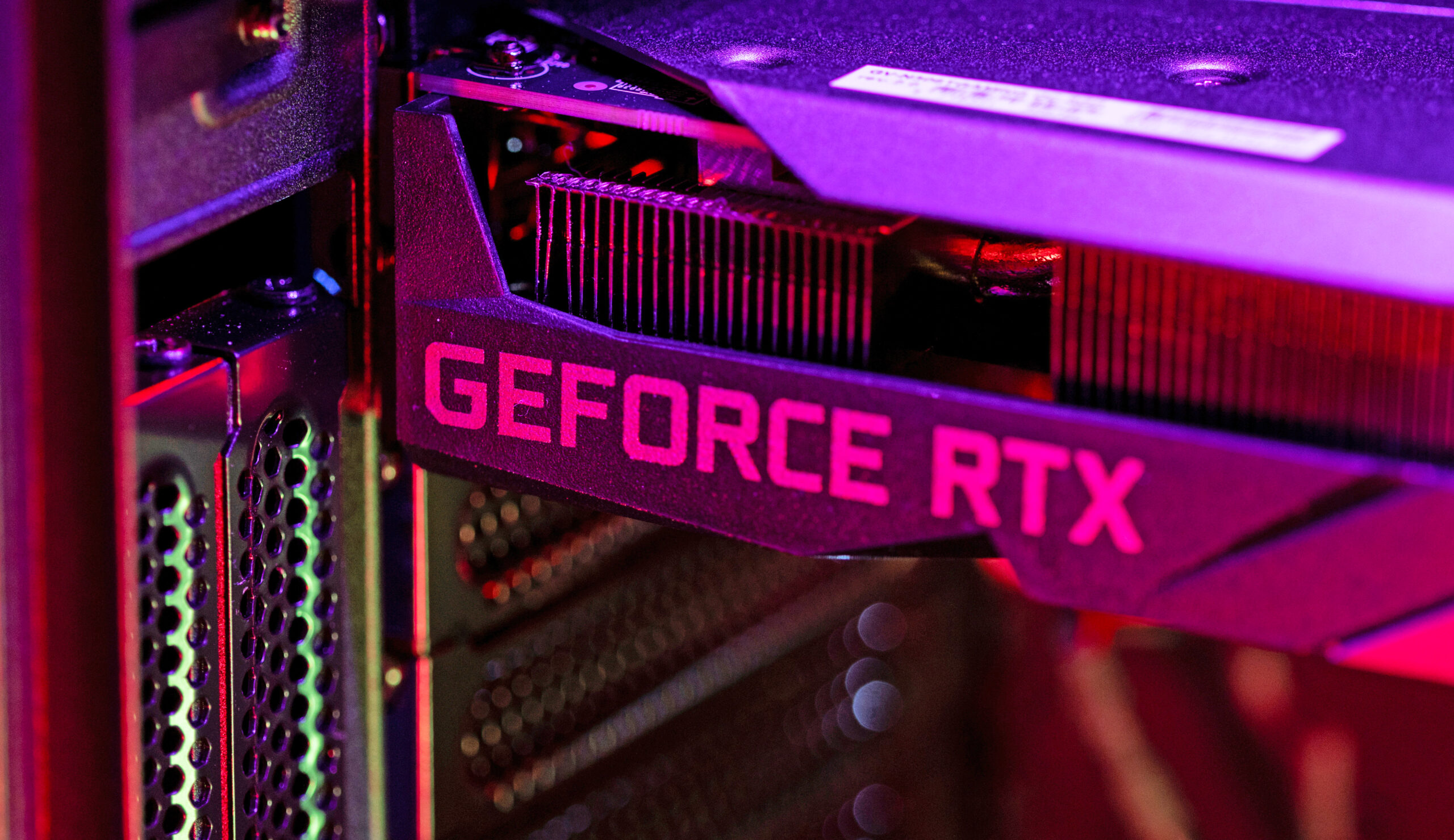
AMD’s FSR has acquired a constructive response throughout the gaming and tech group for bringing an open-source resolution that rivals NVIDIA and is {hardware} agnostic (in a means). AMD FSR runs on each, NVIDIA GeForce and AMD Radeon GPUs and a number of other builders have proven simply how straightforward it’s to implement inside video games although it appears like folks digging by way of the supply code have came upon that the tech behind FSR could be just a little too just like one thing that NVIDIA has supplied in its management panel for some time now.
AMD FSR Would possibly Be A Little Too Comparable To NVIDIA’s Lanczos Upscaler As Revealed By Supply Code, NVIDIA GPUs Have Had Tech Since A Whereas Now & Can Be Enabled In All Video games
As found by Alexander Battaglia of Digital Foundry, the AMD FSR (FidelityFX Tremendous Decision) expertise relies on the Lanczos upscale, albeit, a modified model of it. The FSR algorithm is definitely composed of two fundamental passes, EASU (Edge-Adaptive Spatial Upsampling) and RCAS (Sturdy Distinction-Adaptive Sharpening). The EASU go supplies spatial solely scaling at a comparatively low price & which makes it applicable for lower-end GPUs on desktops and laptops.
You could wish to learn the FSR documentation, 2 faucet Lanczos is the spatial upscaler. pic.twitter.com/gAEika6zma
— Alexander Battaglia (@Dachsjaeger) August 4, 2023
It’s talked about throughout the Open Source code and FSR presentation that the EASU scalar makes use of a modified quick approximation methodology to the usual Lanczos (measurement=2) kernel. The modified FSR model of the Lanczos filter additionally eliminates unfavourable lobes, in any other case often called ringing, by utilizing the closest 2×2 enter texels or 2-tap approximation.
On the coronary heart of FSR is a cutting-edge algorithm that detects and recreates high-resolution edges from the supply picture. These high-resolution edges are a vital factor required for turning the present body right into a “tremendous decision” picture.
FSR supplies constant upscaling high quality no matter whether or not the body is in motion, which might present high quality benefits in comparison with different varieties of upscalers.
FSR consists of two fundamental passes:
- An upscaling go referred to as EASU (Edge-Adaptive Spatial Upsampling) that additionally performs edge reconstruction. On this go the enter body is analyzed and the principle a part of the algorithm detects gradient reversals – basically how neighboring gradients differ – from a set of enter pixels. The depth of the gradient reversals defines the weights to use to the reconstructed pixels at show decision.
- A sharpening go referred to as RCAS (Sturdy Distinction-Adaptive Sharpening) that extracts pixel element within the upscaled picture.
Attention-grabbing. So it’s a Lanczos variant in spite of everything. Previous to FSR being launched, I had requested AMD about this (it seemed Lanczos-y to me), they usually mentioned that the upscaling algorithm was “developed solely in-house”. Which does not appear to be solely correct now…
— Ryan Smith (@RyanSmithAT) August 4, 2023
It is even within the supply codehttps://t.co/9MoGnp4wBl pic.twitter.com/75weYOY9UT
— VideoCardz.com (@VideoCardz) August 4, 2023
Battaglia additional states that this expertise has been supplied inside NVIDIA’s Management Panel for a few years now. Throughout the ‘Handle 3D Settings’ panel, customers can allow GPU scaling and likewise management picture sharpening with extra faucets than FSR for larger high quality. This works on older Turing & Pascal GPUs & might be utilized globally to all DirectX 9, 10, 11, 12, Vulkan, and OpenGL video games.
Now it isn’t essentially the most environment friendly means of upscaling video games as there are particular limitations that apply to utilizing this methodology in comparison with AMD’s FSR and NVIDIA DLSS which is carried out on per-game. It has the next limitations.
At the moment, the next limitations apply:
- Scaling will not be supported on MSHybrid techniques.
- HDR shows pushed by pre-Turing GPUs is not going to help scaling
- Scaling is not going to work with VR
- Scaling is not going to work with shows utilizing YUV420 format.
- Scaling makes use of facet ration scaling and won’t use integer scaling
- Sharpening is not going to work with HDR shows
- GPU scaling engages when video games are performed solely in full-screen mode, and never in
- windowed or borderless windowed mode.
- Some G-SYNC shows have a 6-tap/64-phase scaler which scales higher than that
- supplied by Turing’s 5-tap/32-phase scaler.
- To keep away from unintentionally triggering scaling by functions or DWM, first change to the
- desired (<native) decision from the NVIDIA Management Panel after which launch the
- software.
- Turing’s 5-tap upscaler might not have interaction on sure screens, primarily based on the monitor’s
- vblank timing.
- Turing’s 5-tap upscaler might not have interaction if the enter decision is larger than 2560px
- in both the x or y dimension.
- Scaling is turned off robotically when switching show gadgets.
- “Restore Defaults” choice within the management panel presently doesn’t revert the upscaling decision.
via NVIDIA
Additionally, since this upscaling methodology works for your complete display, there’s a risk of the sport UI or Menu changing into blurry and unable to learn in comparison with the correct options the place devs shall be figuring out for positive which display parts the upscaling must be utilized to and which don’t. It’s fascinating to see that AMD selected the Lanczos Upscale as a base for its FSR tech and improved upon it in a number of methods whereas making it open-source for simpler integration inside AAA titles and is relevant for basic objective use as Jarred Walton over at TomsHardware factors out.
“As a former software program developer, I can attest to the truth that it is simpler to get administration to greenlight a brand new characteristic when mentioned characteristic advantages 100% of the meant consumer base, reasonably than solely a small portion of the potential customers. The wants of the various outweigh the wants of the few or one thing like that.
In fact, the proof is within the consuming of the pudding, and FSR pudding tastes almost pretty much as good as natively rendered pudding — possibly a bit undermixed, however you nearly would not discover, at the least when utilizing the extremely high quality or high quality profiles. Let’s simply not get too carried away with congratulating AMD on creating one thing new and helpful when what we actually needs to be doing is asking what took so lengthy.”
It is usually fairly clear that AMD’s FSR shall be a superior expertise however for many who wish to attempt it out, an fascinating comparability can be to match video games that use FSR and see how NVIDIA’s upscale appears towards that. That is just about doable on any NVIDIA GeForce graphics card from the previous two years together with the GeForce 10 and 16 collection merchandise. However that is solely helpful for the AAA gaming titles that do not have FSR or DLSS help through which case, Lanczos filter by way of the NVIDIA management panel is an effective choice.
Information Supply: Tomshardware









